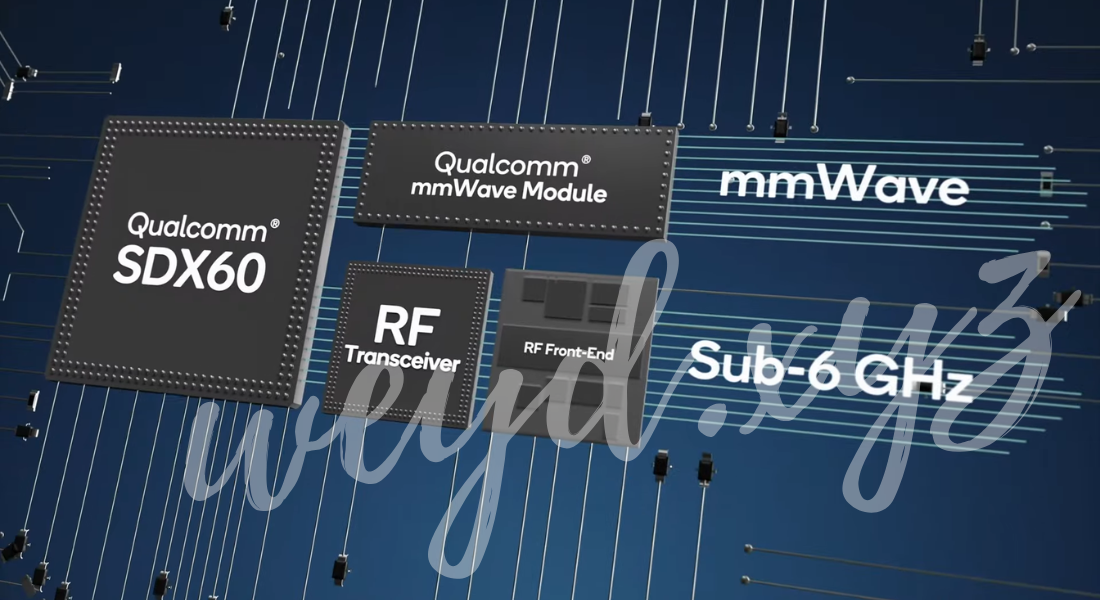Blog
Exploring Qualcomm RF Components: Enhancing Wireless Connectivity with Advanced Solutions
Wireless technology is advancing rapidly, and at the heart of this revolution lies Qualcomm’s RF (Radio Frequency) components. These components are essential for modern communication devices, providing reliable and high-speed connections that support everything from smartphones to IoT devices. Qualcomm RF components are specifically designed to enhance connectivity, improve network stability, and enable devices to perform optimally in various environments. In this article, we’ll delve into the world of Qualcomm RF components, exploring their significance, applications, and contributions to the future of connectivity and communication technology.
What Are Qualcomm RF Components?
Qualcomm’s RF components play a crucial role in handling wireless signals that enable smooth and efficient connectivity between devices. These components facilitate communication over various wireless frequencies, making it possible for devices to connect seamlessly and maintain consistent signal quality. Qualcomm has pioneered the development of RF technology, providing advanced solutions from 4G to 5G, which meet the ever-growing demands of modern communication standards. Qualcomm’s RF components include a wide range of products, such as antennas, RF transceivers, filters, and power amplifiers. Each of these components plays a unique and essential role in ensuring that wireless connections are stable, strong, and capable of supporting high data speeds, which are critical in today’s fast-paced digital world.
Why Qualcomm RF Components Matter
The demand for faster and more reliable connections continues to grow, especially with the rise of smart devices and IoT networks. Qualcomm’s RF components are designed to manage this demand by optimizing performance and efficiency in wireless communication. Unlike traditional RF solutions, Qualcomm’s components offer high integration, allowing multiple functions to be combined into single modules. This integration is essential for reducing power consumption and minimizing the physical space RF systems occupy in compact devices, such as smartphones.
Furthermore, Qualcomm’s RF components are built to be adaptive, dynamically switching frequencies based on the needs of the user and network conditions. This adaptability is essential in maintaining high-speed connections, even in environments with high interference or multiple competing signals.
Key Qualcomm RF Components
- RF Transceivers RF transceivers are responsible for sending and receiving signals. Qualcomm’s transceivers are built for efficiency and precision, ensuring signals are transmitted without loss of quality. These components help devices stay connected even in areas with weak signals, providing better coverage and reducing dropped connections.
- Antenna Tuning Qualcomm’s antenna tuning solutions adjust the antenna to operate optimally in various conditions. The antenna must be able to adapt to different environments and frequencies, and Qualcomm’s technology ensures minimal signal loss. By continuously tuning the antenna, Qualcomm enhances the efficiency of signal reception, which is critical for devices that rely on high-speed data transmission.
- Power Amplifiers Power amplifiers increase the strength of the signal before it is transmitted. This component is especially important for reaching distant receivers, ensuring data travels long distances without significant loss in quality. Qualcomm’s power amplifiers are energy-efficient, which is beneficial for battery-operated devices.
- Filters Filters are vital in blocking out unwanted frequencies that could interfere with the primary signal. Qualcomm’s RF filters help maintain a clear connection by eliminating noise, enhancing the user experience in crowded signal environments. With effective filters, Qualcomm ensures devices operate smoothly, even in high-density urban areas.
- Envelope Tracking Envelope tracking technology by Qualcomm manages power more efficiently during signal transmission. By adjusting the power supply to match the needs of the RF signal, envelope tracking reduces power wastage and extends the battery life of portable devices. This technology is especially valuable in smartphones, where battery conservation is a priority.
Applications of Qualcomm RF Components
Qualcomm RF components find applications across various industries due to their adaptability and high performance. Some notable areas include:
- Smartphones and Tablets: With the rise of mobile internet and high-speed data requirements, Qualcomm’s RF components are essential for seamless connectivity and longer battery life in smartphones and tablets.
- IoT Devices: The Internet of Things relies on efficient RF solutions to connect a vast number of devices. Qualcomm’s components ensure that IoT devices can communicate reliably, even in complex networks.
- Automotive Industry: As connected vehicles become more common, RF components play a vital role in enabling car-to-car communication, navigation, and infotainment systems.
- Wearables: Smartwatches and fitness trackers rely on RF technology for connectivity. Qualcomm’s RF components allow these devices to maintain a stable connection while minimizing power consumption.

Advantages of Qualcomm RF Components
Qualcomm’s RF components offer several advantages that make them a preferred choice for manufacturers. Here are some key benefits:
- High Efficiency: Qualcomm RF components are designed for optimal performance, ensuring maximum efficiency in data transmission and reception.
- Reduced Power Consumption: By integrating advanced power management features, these components are highly energy-efficient, extending battery life in portable devices.
- Enhanced Connectivity: Qualcomm’s components enable faster, more reliable connections, especially in areas with high interference. This capability is crucial for urban environments where signal congestion is a common issue.
- Compact Design: Qualcomm has developed RF solutions that integrate multiple functions into compact modules. This design saves space in devices, making it easier to fit RF components into small form factors like wearables and smartphones.
- Future-Proof Technology: Qualcomm invests in innovation, ensuring its RF components are compatible with emerging technologies like 5G and future networks. This approach guarantees that devices equipped with Qualcomm components remain relevant in an evolving tech landscape.
How Qualcomm RF Components Shape the Future of Connectivity
Qualcomm continues to push the boundaries of what RF components can achieve. With the ongoing development of 5G and the upcoming 6G, the demand for advanced RF solutions will only grow. Qualcomm’s research and innovation focus on improving connectivity, speed, and power efficiency, making future networks faster and more reliable.
In addition to 5G, Qualcomm is exploring new frontiers such as mmWave technology, which allows for ultra-fast data transmission over short distances. This technology, combined with Qualcomm’s RF components, could revolutionize areas like augmented reality, virtual reality, and real-time data applications.
Moreover, Qualcomm’s RF solutions are paving the way for smarter IoT networks. By making it easier for IoT devices to connect seamlessly, Qualcomm supports the creation of smart homes, cities, and industries. This trend points to a future where connectivity is ubiquitous, with devices communicating effortlessly in a connected ecosystem.
Conclusion
Qualcomm RF components are at the core of today’s wireless technology, providing reliable, high-performance solutions that enhance connectivity across devices. As the demand for faster, more efficient connections grows, Qualcomm’s RF technology will continue to lead the way in developing new solutions for the next generation of wireless networks. Whether it’s in smartphones, IoT devices, or the automotive sector, Qualcomm RF components are shaping the future of connectivity, ensuring that users can stay connected in an increasingly digital world.
In conclusion, Qualcomm’s RF components play an essential role in modern communication technology, supporting industries and applications that rely on efficient and robust connectivity. With a focus on innovation and efficiency, Qualcomm is setting the standard for RF technology, making it a cornerstone of wireless connectivity.


